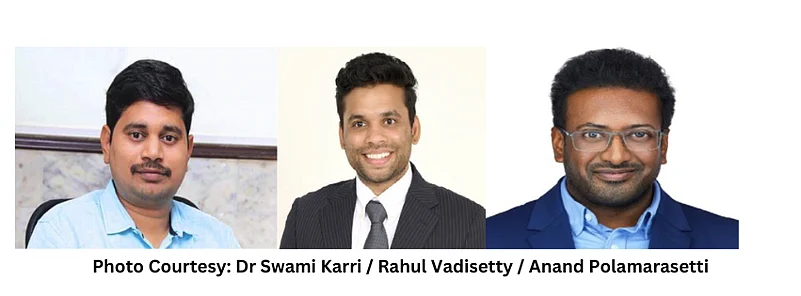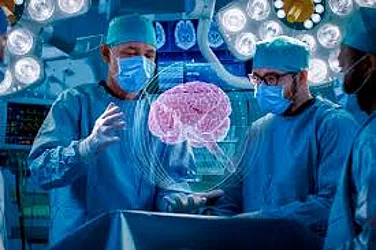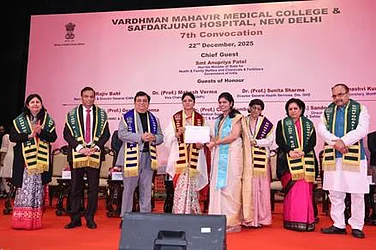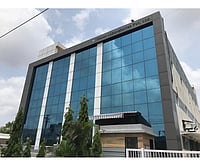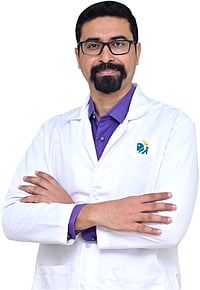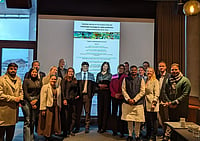Hospitals worldwide face increasing pressure to detect and diagnose pulmonary diseases, including tuberculosis (TB), lung cancer, and pneumonia, among others. Despite the availability of chest X-rays (CXR) as a primary diagnostic tool, many hospitals still encounter numerous challenges in ensuring timely and accurate diagnosis. In Mr. Rahul Vadisetty and Mr. Anand Polamarasetti’s groundbreaking research titled "Generative AI: A Pix2pix-GAN-Based Machine Learning Approach for Robust and Efficient Lung Segmentation", a potential solution is presented that promises to overcome many of these challenges by leveraging the power of generative adversarial networks (GANs).
Aayushman Hospital, a leading healthcare provider committed to enhancing diagnostic capabilities by incorporating advanced AI technologies, initiated discussions and has expressed keen interest in leveraging Mr. Rahul Vadisetty and Mr. Anand Polamarasetti’s groundbreaking research on Pix2pix-GAN-based lung segmentation. Recognizing the pressing need for accurate and efficient diagnostic tools, Aayushman Hospital is eager to implement this cutting-edge AI technology to automate lung segmentation from chest X-rays. By doing so, the hospital aims to improve diagnostic accuracy, reduce the workload on radiologists, and deliver faster, life-saving treatments to patients suffering from pulmonary diseases such as tuberculosis and lung cancer.
Challenges in Early Detection of Pulmonary Diseases
Before diving into how this research can address critical issues in the hospital setting, it is essential to understand the most common challenges in detecting pulmonary diseases early on.
Radiologist Shortage and Overload: One of the most pressing issues hospitals encounters is the shortage of trained radiologists. As the global demand for imaging-based diagnostics increases, particularly in low- and middle-income countries, many healthcare facilities are struggling to keep up.
Accuracy of Manual Interpretation: Even in settings with skilled radiologists, the manual interpretation of CXRs can be prone to variability. Human errors, especially under high workloads, can lead to missed or incorrect diagnoses. The complexity of the lungs' anatomical structure, combined with the overlapping shadows of other organs and bones, makes accurate segmentation and diagnosis particularly challenging.
Lack of Automation in Segmentation: Many hospitals still rely on manual or semi-automated methods for lung segmentation—an essential step for accurate disease detection. However, manual segmentation is time-consuming, labor-intensive, and often inaccurate, especially in complicated cases where other organs obscure the lung field.
Inconsistency Across Different Datasets and Demographics: Another major challenge is that segmentation methods trained on one dataset may perform poorly on others, especially when different demographics or imaging technologies are involved. This inconsistency leads to reduced reliability and accuracy in clinical settings.
How Pix2pix-GAN Research Can Help Overcome These Challenges
Mr. Rahul Vadisetty and Mr. Anand Polamarasetti’s research offers a breakthrough solution that can directly address these challenges through automation and improved accuracy in lung segmentation. Here’s how the results of this research could transform hospital diagnostic workflows:
1. Automation of Lung Segmentation to Relieve Radiologist Workload
Incorporating the Pix2pix-GAN model into hospital workflows can significantly reduce the workload on radiologists by automating the segmentation process. The Pix2pix-GAN model employs a U-Net-based generator-discriminator architecture that can generate highly accurate lung segmentations from CXR images.
By using an AI model that can process hundreds or even thousands of images quickly, hospitals can improve diagnostic throughput, allowing them to serve more patients efficiently.
2. Enhanced Diagnostic Accuracy and Consistency
The Pix2pix-GAN model is designed to improve accuracy over traditional methods, which often suffer from misinterpretations due to complex anatomical structures and overlapping shadows in CXRs. By training the model on the Montgomery and Shenzhen datasets, the researchers were able to demonstrate that their GAN-based model could produce accurate lung segmentations with high precision, recall, and F1-score.
3. Cross-Dataset Robustness for Broader Applicability
One of the key innovations of Mr. Rahul Vadisetty and Mr. Anand Polamarasetti’s research is the robustness of the model when tested across different datasets. The model was trained on the Montgomery dataset and evaluated using the Shenzhen dataset—showing promising generalizability across different types of data. The ability of the Pix2pix-GAN model to perform consistently across different datasets ensures that hospitals, regardless of their geographic location or available equipment, can implement this technology with confidence.
4. Data Augmentation for Improved Model Generalization
The research also utilizes extensive data augmentation techniques, such as rotation, shifting, and zooming, to increase the variability in the training data. These techniques help the model generalize better to new and unseen data, which means hospitals can expect the model to perform well even in cases where imaging conditions or patient anatomy vary from the training dataset.
For hospitals, this translates into fewer instances of segmentation errors and misdiagnoses, particularly in edge cases where abnormalities are difficult to detect using conventional methods.
5. Faster Diagnosis for Time-Critical Conditions
Pulmonary diseases, particularly TB and lung cancer, require early diagnosis to ensure successful treatment. By automating lung segmentation with the Pix2pix-GAN model, hospitals can significantly speed up the diagnostic process.
6. Reduced Costs and Better Resource Allocation
For hospitals, the implementation of AI-powered tools like the Pix2pix-GAN model can also lead to substantial cost savings. This is especially important for hospitals in low-income regions, where financial resources are limited, and medical professionals are stretched thin.
Conclusion: The Future of AI in Healthcare
Mr. Rahul Vadisetty and Mr. Anand Polamarasetti’s research offers a promising solution to many of the challenges hospitals face in the early detection of pulmonary diseases. By automating the lung segmentation process with a robust and accurate Pix2pix-GAN model, hospitals can significantly improve diagnostic accuracy, reduce radiologist workloads, and ensure faster treatment for patients.
As the healthcare industry continues to embrace AI-driven technologies, research like this plays a crucial role in paving the way for more efficient, accessible, and reliable diagnostic tools. Hospitals around the world stand to benefit from adopting such innovations, ultimately improving patient outcomes and saving lives.
Hospital URL: https://aayushmanhospital.in/






